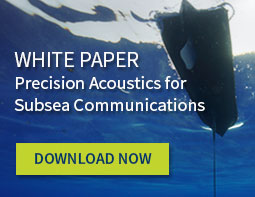The Surprising Towing Ability of the Wave Glider
Guest Contributor — January 25, 2017
In 2007, I had the good fortune to meet Liquid Robotics and swim with a very early generation Wave Glider. Even that prototype astounded me with the strength of its bollard pull, a fancy name for towing power. Like a tractor, the Wave Glider steadily moves along and, if properly equipped, can pull significant loads.
There is a great deal of engineering involved in turning this simple powerful pull into an effective ocean instrument. The two-part design of the Wave Glider makes it well suited for towing instruments at depth. Deploying a towed payload from a Wave Glider results in a three body, two tether, configuration. Technical considerations for towing payloads include: drag, mass, buoyancy, power, and communications. These challenges have been managed through a variety of engineering approaches. You can read about this in greater detail in a paper published at OCEANS 2016 (Unmanned Surface Vessels (USVs) as tow platforms: Wave Glider experience and results).
While engineering is important, the applications that engineering enables are exciting. Towing payloads behind a Wave Glider provides excellent isolation from surface and mechanical noise. It also provides a persistent, long-endurance, option for sensor deployment. Numerous applications have been demonstrated using towed bodies behind Wave Gliders.
Wave Gliders have been used to tow a multi-frequency echosounder designed to detect biomass. This can help researchers understand fish behavior and thus better manage fisheries resources. Of course, the early application for Wave Gliders was listening to whales, and this has been supported by towed passive hydrophones (Monitoring marine mammal acoustics using Wave Glider).
Gateway missions, which connect undersea or seafloor systems to the air or space above, have used a towbody to deploy acoustic modems that provide the key connectivity through the water. This approach has supported numerous applications, one of the most exciting being geophysical research where a Wave Glider served as a link to earthquake-monitoring sensors, seismometers, in the Pacific ocean. The gateway concept allowed information about earthquakes to be shared with scientists effectively in real-time. Previously such data had to wait until a ship could recover the seismometer, weeks or even months later.
Since I first felt the tug of the Wave Glider ten years ago it has matured into an incredibly versatile platform. The addition of towed systems, perfected in recent years, only increases the opportunity to persistently monitor and understand our global oceans.
Justin Manley is an ocean technologist and the President of Just Innovation Inc.
